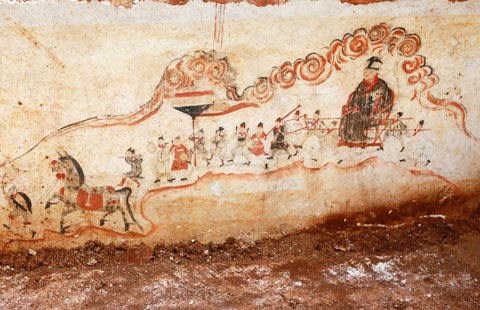Open lens captures multiethnic culture
By Mike Peters ( China Daily ) Updated: 2014-10-17 07:19:36
 |
|
Yi women consult a local female shaman in Meigu county, Guizhou province. Photo provided to China Daily |
 |
| Photo Beijing 2014 kicked off |
 |
| Centurial photos from France reveal old China |
That experience taught her how to write, present and sell a project to sponsors, who today are sometimes governments.
She can trade her images for access and logistical help in places like Siberia, where many areas are off-limits to the public because of security issues.
At the end of the last glaciation, 10,000 years ago, as the ice slowly melted, nomadic people from Central Asia moved north, following their migrating animals to Siberia and into North America. Exploring the story of that migration, she spent months with the Inuit in Canada, the nomads in Mongolia, and with the Dolgan reindeer breeders in Siberia.
The research brought her to China, where she was fascinated by the cultures of Guizhou province, one of China's poorest regions. There she found a harmonious family of communities, representing 49 of the country's 56 ethnic groups.
Other than exciting individuality, their faces gave her hints of bone structures and other traits that she'd observed in remote areas from Mongolia to Canada.
"I didn't do too much research before I went to Guizhou," she says via Skype from her home in Rome. "I wanted to meet people and discover for myself the intricacies of the cultures."
A common trait she admired in China was the value placed on collaboration - "so different from the European individualism".
In Bandi village she was taken by the legacy of the "black Yi" (noble class) and the "white Yi" (commoners who worked for aristocrats ages ago).
"Today the people are very mixed, you can't see which type they are by looking at their faces," she says. "The Yi are very proud people with a strong sense of themselves."
|
|
|
|
|
|
|
|























 Raymond Zhou:
Raymond Zhou: Pauline D Loh:
Pauline D Loh: Hot Pot
Hot Pot Eco China
Eco China China Dream
China Dream China Face
China Face






